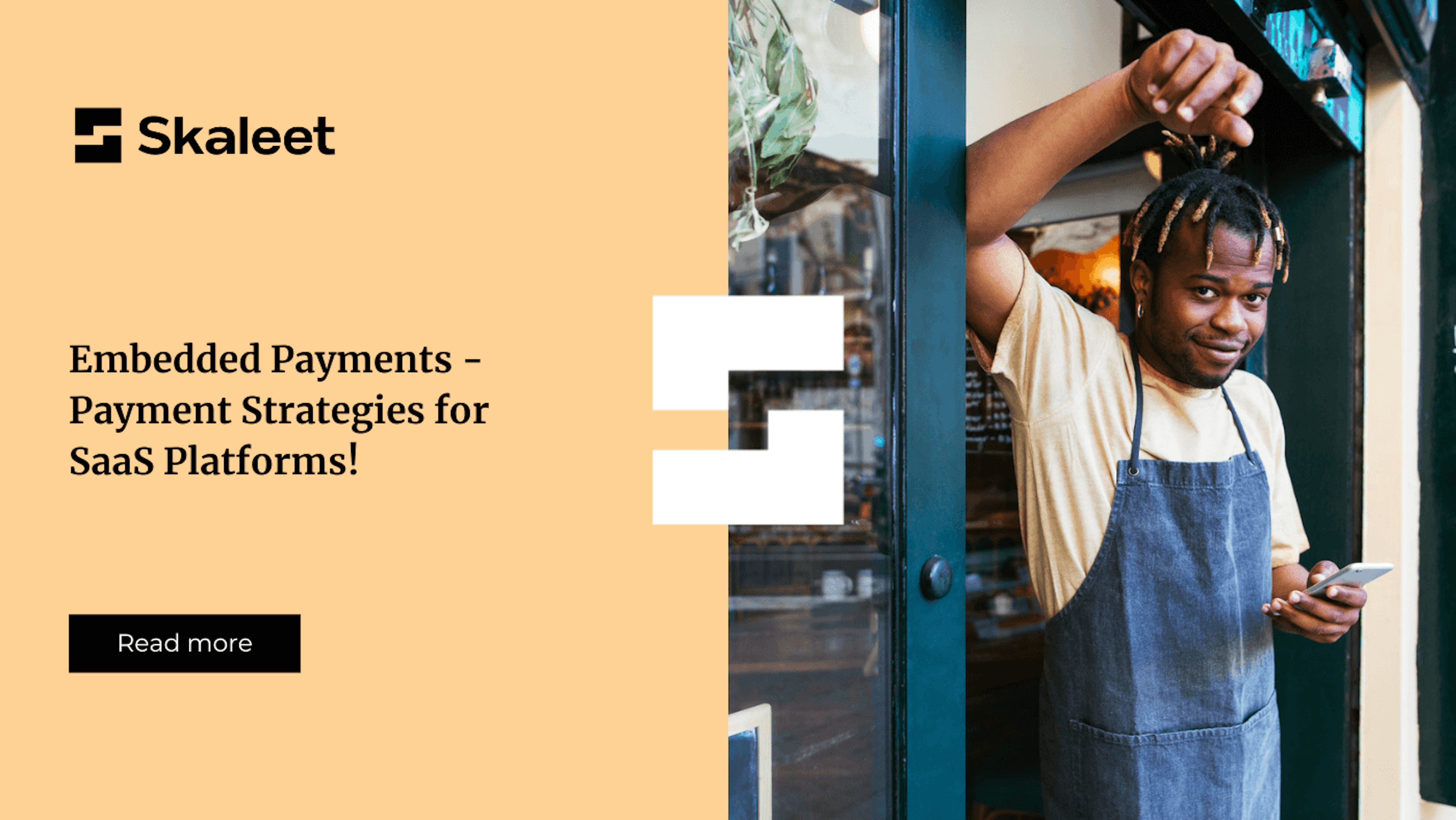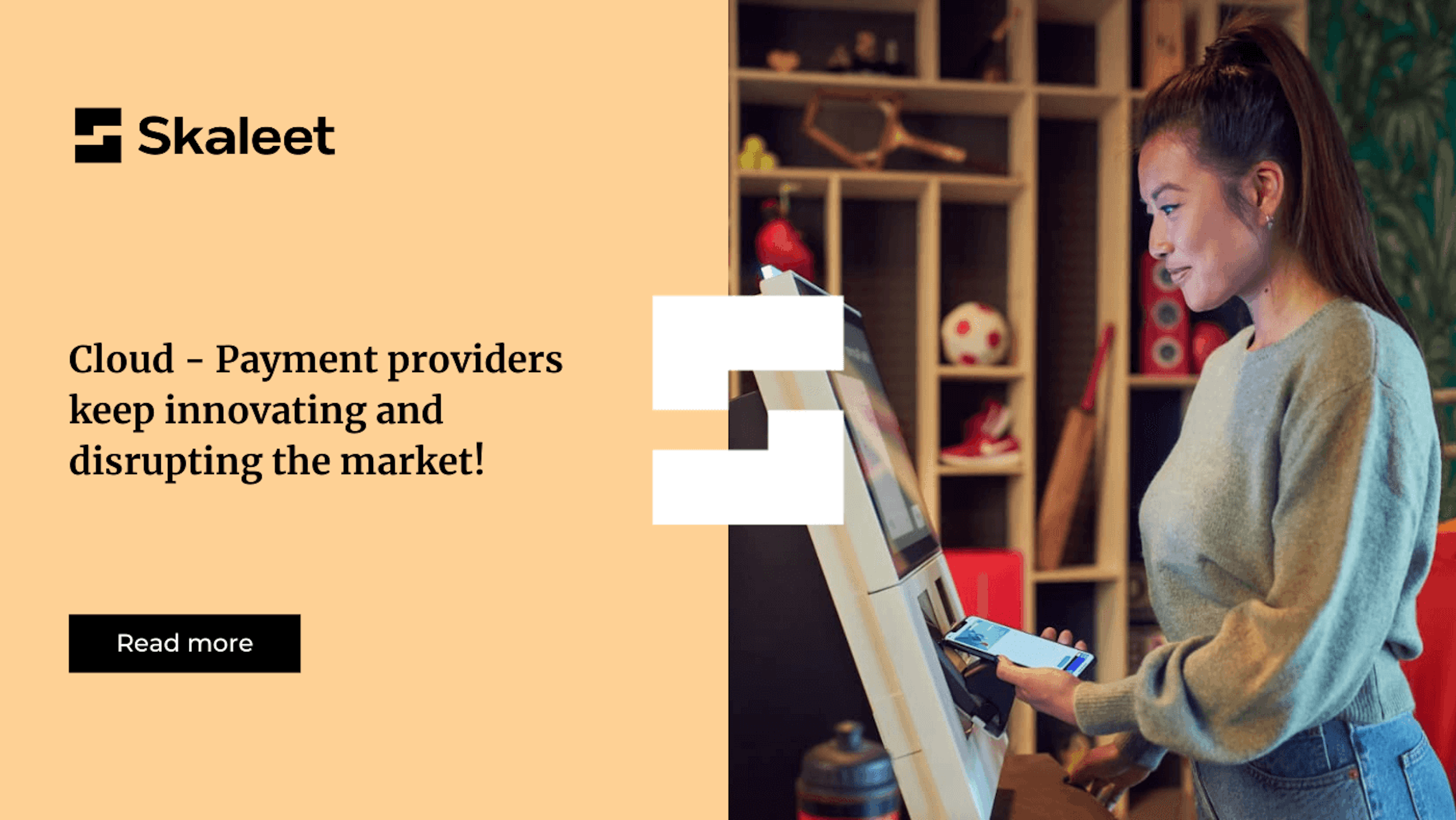
July 19, 2022
Embedded Payments - Payment Strategies for SaaS Platforms! 💡
Some vertical SaaS companies are looking to embed financial services!

Do you remember the credit/debit card or the payment method you used the first time you used a car-sharing app? Maybe, but it’s unlikely. As the first player in this new market, Uber managed to remove the friction attached to the payment part of the process. Until ten years ago, everyone had to choose between cash, credit card, or a checkbook to make a payment. The process was tedious and painful for each customer experience and every industry: looking for your wallet, finding the right payment card, waiting for the transaction to be completed...
Today, the emergence of digital payments has eliminated the need to think about how we complete a transaction. Customers can buy instantly without ever pulling out their wallets. We can now see the relevance of the payments industry, constantly evolving and innovating to provide customers with the right solutions for their issues, wherever and whenever they need them. For this reason, there have been a lot of innovators among payment providers and e-commerce platforms since the early 2000s: Paypal, Square/Block, Shopify, Adyen, etc. These players have become leaders by taking a customer-centric approach. They understand how and where customers want to pay for goods and services in their everyday lives and offer tailored technological solutions.
However, major payment providers recognize that to continue to exist, it is necessary to "disrupt themselves." What works today may not be what works tomorrow. All payment providers must be able to adapt to new experiences to meet changing customer expectations and behaviors. We see this with the growing interest in cryptocurrencies and digital assets, especially given how quickly they have appeared in some payment apps and e-commerce sites to buy or transfer assets.
Clearly, how digital payments companies create technology systems plays a critical role in their ability to continue thriving in the industry.
Over the past two decades, the payments industry has been in a state of constant disruption, and this is expected to continue for the next decade. According to research from Accenture, payment modernization represents a $300 billion market opportunity, with approximately 2.7 trillion cash transactions shifting to card or digital payments by 2030. According to the 2021 FIS report, digital payments have surpassed cash payments for the first time, and "Buy Now, Pay Later" is expected to double by 2024. Change is everywhere. Today, new financing solutions are emerging, payments are now real-time, and digital currencies are becoming a reality rather than a dream. On top of that, there are more and more requirements for data standards and security. On the technology side, cloud computing, 5G, NFC, AI, and Machine Learning are maturing rapidly.
At the same time, consumer demands and expectations are accelerating for an increasingly frictionless, flexible, and seamless payment experience. Customers no longer want to be forced to rely on traditional payment ecosystems. For industry players, this goes beyond a branding exercise, as it is now about creating added value to improve consumers' daily lives. Indeed, every time a customer has to stop and think about how to make a payment, it hinders their purchase intention. But technological advances are bringing the industry towards a tipping point where transactions will be deeply embedded in user experiences and so seamless that they will become invisible. Payment won't get in the way of shopping anymore because the complicated work of processing a transaction will be done in the background.
Banks and payment processors have developed around their payment products. This has created silos that separate components and force the creation of standalone customer experiences. In effect, credit card and transaction account systems each run their own set of processes with their own anti-fraud and anti-money laundering tools.
On the other hand, consumers who want a frictionless shopping experience don't care which processes are used as long as they can complete their transactions easily and securely. Transactions must be processed in real-time, for free or at a low cost.
To do this, payment infrastructures must become scalable and agile to accommodate demand spikes generated by seasonal volumes and real-time fluctuations in computing resources. Such infrastructures can only be achieved via a cloud-native architecture that can facilitate microservices and APIs. A high level of granularity and interoperability will enable the development of new services both internally and externally with partners. APIs enable applications that leverage different systems and microservices to share data and functionality with partners, eliminating the laborious challenges of integrating with legacy systems.
Financial institutions will need to rebuild their systems and deliver new customer-centric payment experiences. To thrive in the future, payment leaders must first establish a good technology foundation. What they need starts in the cloud.
Not long ago, if you asked a payment provider or financial institution when they were considering adopting the cloud, you would have had a pretty negative response. There was a long-held perception that the cloud was only good for specific industries, but certainly not for financial services, that the cloud could not provide the necessary processing speed or resilience, nor be able to manage risk and compliance in an industry as heavily regulated as financial services.
But the cloud of 2022 is not the same as the cloud of 2012. The cloud has become the technology foundation required across all business sectors, offering greater data access, dynamic scale, built-in security, and agile capabilities that drive new functionality and innovation. Traditional solutions are unable to keep up with this dynamic. Today, there are five main reasons why cloud-based payment platforms are helping businesses deliver unique payment experiences:
The migration to the cloud puts flexible and scalable cloud architectures and technologies, such as containers and microservices, at your fingertips, enabling teams to quickly and securely build new applications. Cloud-based architectures and data modernization can save millions of dollars each year that would otherwise be spent on hardware, software, and on-prem licensing costs.
Cloud platforms help the payments ecosystem centralize and organize data, making it easier to consume data in near-real-time to identify monetization opportunities, such as personalized offers or new product development. The transition to cloud-based data platforms can also satisfy critical use cases, such as compliance reporting, intelligent fraud detection, and transaction risk management. Gartner predicts that by 2023, organizations that promote data sharing will outperform their peers on most business value metrics.
The cloud opens the door to advanced analytics, allowing payment processors to deep-dive into their data and discover new insights. Most cloud providers also enable payments companies to quickly leverage Artificial Intelligence models at scale, so they can gain insights and make decisions instantly on the massive amounts of transactional data they process.
Providers must balance faster payment processing with careful management of data collection, data use, and mitigation of potential fraud or inappropriate disclosures. Data Privacy is an integrated service with cloud platforms, providing stringent data policies, rich compliance reporting, and high-performance risk simulation. It also gives payment companies complete control over their data, transparency into where their data is stored, and allows them to operate in a localized and distributed manner based on data sovereignty requirements.
Doubts about cloud security are dissipating, as trust in service providers depends largely on their ability to deliver the best security. The cloud offers multilayered security with identity management, network security, threat detection, and response offerings that rival most in-house solutions. Increasingly, cloud capabilities are also helping to deliver even more secure payment capabilities, such as credit card tokenization to protect data during online transactions.
Ultimately, it all comes down to enabling businesses to actively generate disruption, not be the victim of it. Cloud systems for payments provide the flexible architecture and solutions needed to iterate, improve, and continuously meet customer needs.
An important part of the payment lifecycle and the transfer of payment requests to local clearing systems for processing provide a compelling opening for the use of cloud-native payment gateways. Despite the importance, payment gateways are potentially one of the lower-risk areas to use the cloud:
Adopting cloud-native payment gateway solutions can generate quick wins like:
Cloud-based payment gateways may not be the start of a revolution or migration to the cloud. However, a properly executed strategy could enable financial institutions to build confidence in cloud migration. Given the systemic importance of payments, the migration of payment gateways should give non-payment functions the confidence to further explore the potential uses of the cloud. The many benefits of using the cloud, such as reduced costs and increased agility, will become apparent when cloud technology is actually used, even partially. This can act as a pathfinder effect to move both financial institutions and IT to the cloud.
The day will come when standing in line to pay will become obsolete, and payments will be totally transparent. Imagine going to a gas station where you only need to fill up your car. In this new reality, you can walk into a store, pick up what you want, and leave without even taking your wallet out. Your smart fridge already allows you to order new products or even recognize that you need a new bottle of milk and order it for you.
Payment providers now have an opportunity that did not exist in the last decade to predict and anticipate what customers want and reinvent themselves simultaneously. Technology and cloud capabilities will enable the payments industry to make decisions and actively reshape the payments landscape.
Skaleet and its Cloud Core Banking Platform are part of the disruptive approach to payment, supporting payment and e-money institutions in their payment infrastructures by offering a scalable, reliable, and secure SaaS platform for their rapid growth. This cloud-native solution offers balanced ease of use, automated deployment, and control over security, including ensuring that databases remain highly secure. The cloud is one of the keys to successful growth. This will enable payment players to execute their operations and configure their own value proposition while designing new integrated payment experiences that meet new consumer demands and requirements.
Innovation. FinTech. Digital Banking. Neobanks. Open Banking. Core Banking. Cloud.

July 19, 2022
Some vertical SaaS companies are looking to embed financial services!
Register to our newsletter